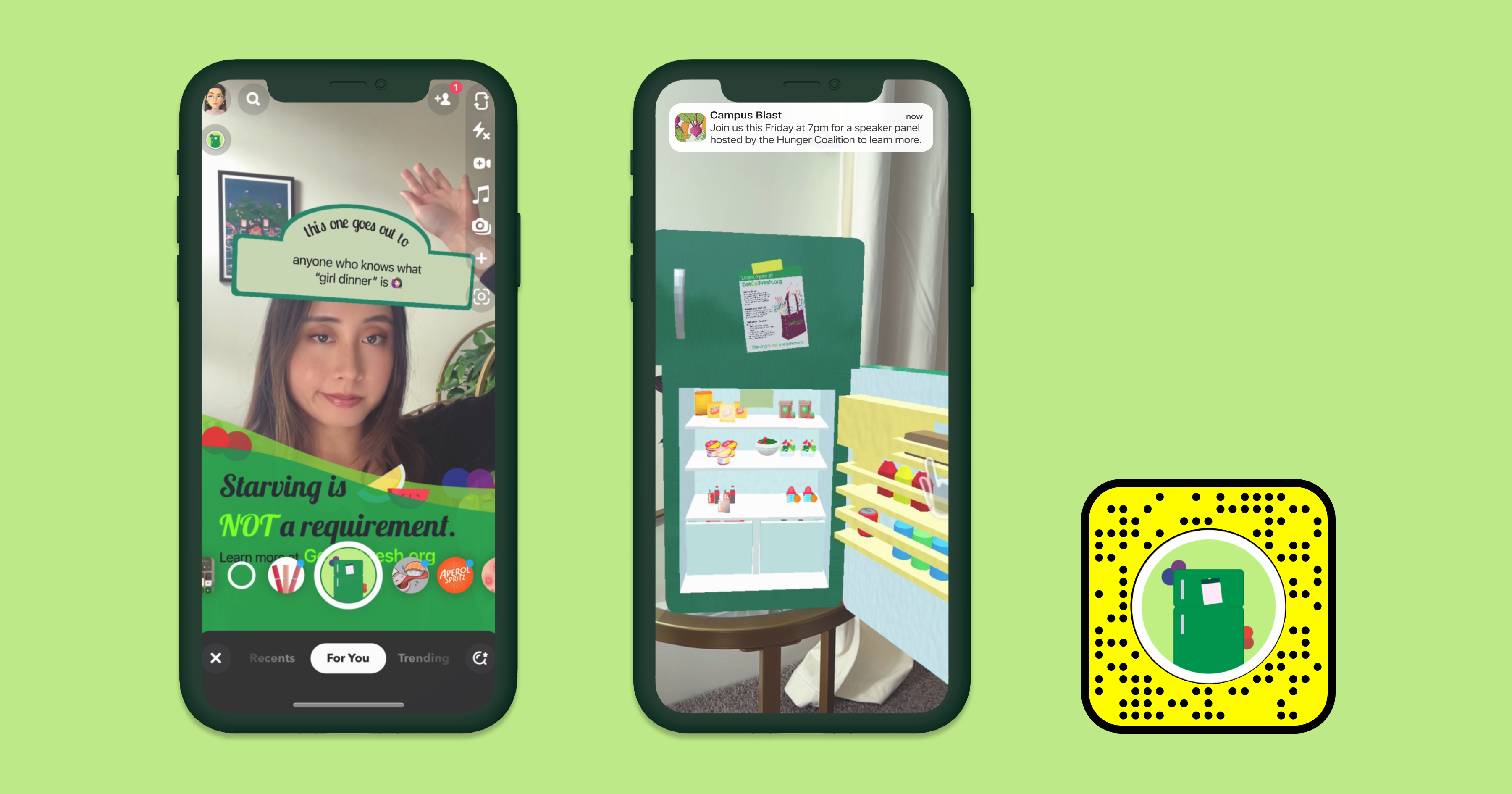
Our design challenge was multifaceted: Starting with a brief to create an AR experience centered around the critical issue of 'Food Insecurity,' our team embarked on a journey that involved a meticulous examination of qualitative data. Our task was to transform this broad, conceptual theme into a user-centric, impactful solution.
We worked collaboratively, guiding the project from concept to completion, while also taking ownership of the end-to-end design process encompassing user flows, interactions, and visuals. Furthermore, we assumed the role of strategic drivers, shaping the project's planning and vision. The pinnacle of our endeavor was the presentation of our work at a showcase attended by Snap executives, where we had to clearly articulate our design decisions to internal stakeholders across Snap, Snap AR, and Snap Labs.
Our project aims to create an immersive Augmented Reality experience to shed light on this issue, foster empathy, and encourage action among students and the wider community.
The first part of our AR experience revolves around the front camera, a space where engagement begins with empathy. A personalized message, "starving is not a requirement," encapsulates the lens's essence, urging users to ponder the issue of food insecurity. This simple yet impactful tagline appears as part of the augmented reality overlay, creating an immediate and resonant connection between the user and the cause.
The second part of the experience takes users into the heart of the issue using advanced world-tracking technology. Employing world tracking over surface tracking, we place an interactive 3D fridge within the user's environment. This 3D fridge functions as a portal, seamlessly blending the digital and physical realms. Upon interaction, the fridge door opens, revealing a wealth of elements and interactive components that guide users through an immersive exploration of food insecurity's nuances.
In pursuit of a compelling AR experience addressing food insecurity, our project initially began with a broad, open scope. However, it was through a comprehensive qualitative research approach that we uncovered a specific and impactful direction – focusing on college students who experience food insecurity.
". . . diaries can be used effectively over relatively long periods of time and are effective in exploring health issues. . . diary techniques can offer some unique insights into the ongoing health routines and can prove invaluable in uncovering hidden aspects of daily lives and routines that impact health histories. . ."
Recognizing the importance of grounded insights, I embarked on a qualitative research journey by engaging with representatives from nonprofit organizations working on food insecurity. These interviews were conducted with individuals who possessed a deep understanding of the issue and its implications for various demographics.
The interview process entailed a meticulous selection of nonprofits followed by meaningful dialogues with their representatives. By doing so, I aimed to uncover hidden narratives and perspectives that could inform our design direction. These conversations provided a comprehensive understanding of the issue's nuances and potential impact areas.
The interviews unveiled an almost too-obvious opportunity within the broader context of food insecurity. The insights revealed that college students constituted a significantly affected demographic. The challenges they faced – often invisible to the larger discourse – highlighted a critical need for tailored solutions. This revelation marked a pivotal moment that reshaped the lens design, steering it toward a more focused and impactful direction.

Tackling unfamiliar software in a short span was tough. But this challenge pushed us to learn quickly and efficiently. While we began with big ideas, time and resource constraints brought us down to earth. Some of our initial plans proved too ambitious for our timeline. This taught us the importance of finding a middle ground between innovation and practicality.
Taking on the project manager role was a new experience for me. It was a learning curve in coordinating tasks, aligning the team, and maintaining momentum. I grasped that leadership involves not just assigning work, but fostering collaboration and growth.
Creating an extensive AR experience was a first for me, and it opened my eyes to what's possible. The blend of digital and physical worlds intrigued me, making me realize that my limits are what define the boundaries. Our project underlined the potential of AR as a tool for social impact. We designed an experience that not only engages users but also sparks conversations about real-world issues. This realization pushes me to explore how AR can serve as a driver of positive change.